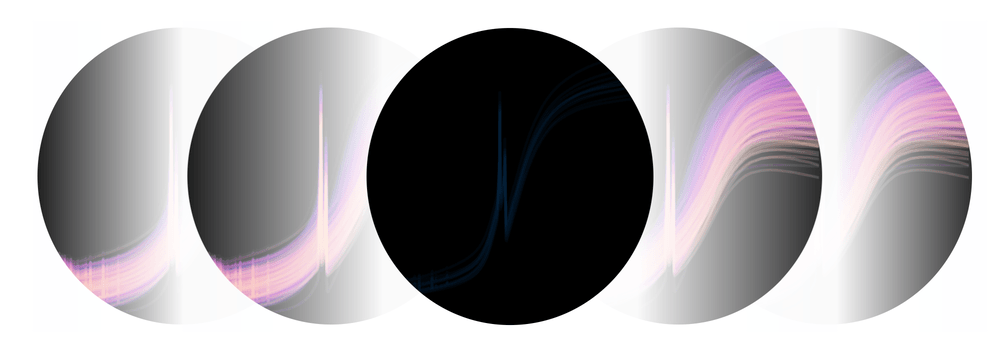Information
What?
A week-long winter school designed to teach – from the ground up – the principles of Bayesian X-ray spectral analysis. By covering the fundamentals of X-ray spectral fitting all the way to modern methods with the Bayesian X-ray Analysis (BXA) package, the programme is relevant for any X-ray astronomy researcher interested in advancing their skills in X-ray spectral analysis, with no prior experience required. In addition, the workshop will feature invited seminars from experts currently leading novel and exciting projects that showcase cutting-edge X-ray spectral fitting techniques. The workshop will be useful for any X-ray astronomy researchers interested in using X-ray spectral fitting for their research, including those with no prior experience.Why?
X-ray spectra offer a unique window into the hot and energetic Universe, and X-ray spectral fitting of models is a powerful technique to infer information from observations of astrophysical objects. Finding best-fitting parameters for a given spectral model and dataset(s) however is not a simple task. BXA offers a novel way to do this by connecting X-ray spectral fitting packages to nested sampling algorithms for Bayesian parameter estimation and model comparison with the Bayesian evidence.When?
7 – 11 February 2022Where?
Institute of Geophysics, Boční II/1401, 141 31 Praha 4, Spořilov Invited science talk recordings are available at our Youtube channel. For participants planning to attend in person, you can check the rules and restrictions regarding the pandemic for entering Czechia here.Registration
Registration is no longer possible. To view the recorded talks, see our Youtube channel. The XSF22 Slack workspace is also still active for asking questions and discussing X-ray spectral analysis. To get access, send us an e-mail.Code-of-conduct
We have adopted the Royal Astronomical Society Code of Conduct for our workshop. All participants are expected to adhere to this by conducting themselves professionally, respectfully, and collegially throughout. Any issues should be brought to the attention of any of the organisers.Financial sponsor

Registration
Registration is no longer possible. To view the recorded talks, see our Youtube channel.
Programme
Overview
- Day 1: Introduction to the X-ray spectral fitting software Xspec, PyXspec and Sherpa
- Day 2: Introduction to the Bayesian X-ray Analysis (BXA) platform
- Day 3: BXA tutorial exercises, session 1
- Day 4: More advanced concepts with BXA
- Day 5: BXA tutorial exercises, session 2
Scheduled talks
All times are in Central European Time. To watch the live-streamed talks, fill out the registration form if you have not already done so. Monday 7th- 14:00-15:00: Keith Arnaud (Maryland)
-
The past, present & future of X-ray spectral analysis (plenary)
I will give an introduction to spectral fitting in X-ray astronomy covering what we do, why we do it that way, and what the challenges are. I will finish with a look at the data that we are expecting in the future and how that will pose new challenges.
+ Abstract - 16:00-17:00: Richard Mushotzky (Maryland)
-
High Energy Astrophysics Spectroscopy (plenary)
High energy astrophysical spectroscopic observations have a unique role to play in astrophysics being able to derive (potentially) the basic physical parameters (e.g. temperature, density, magnetic field, gravity, chemical composition, ionization state, velocity information, emission process, equilbrium state etc) of a huge class of objects where gravity is very strong or are moving very fast or are 'very hot' or energetic such as the coronae of stars, neutron stars) stellar mass black holes, novae, young supernovae, supernova remnants, Active Galactic Nuclei (AGN), clusters of galaxies, star forming and elliptical galaxies (for a limited set). Detailed understanding of the spectra is key to a huge range of exciting and important issues ranging from the very small (the event horizons of black holes) to the very large (the structure and evolution of clusters of galaxies). However x-ray spectra cover a huge range of wavelengths, atomic species and ionization states as well as a large range of continuum physical processes. Thus interpreting the spectra to derive physical parameters is fundamentally challenging. I will present a (biased) overview of the field and present day challenges.
+ Abstract
- 11:00-12:00: Johannes Buchner (MPE)
-
Bayesian X-ray Analysis (plenary)
I introduce inference with likelihoods in frequentist and Bayesian ways, different styles of model comparison, and Monte Carlo algorithms (Importance Sampling, MCMC and nested sampling) to address interesting science questions in practice. Briefly, BXA's features, diagnostics and outputs are discussed, before concluding with practical advice.
+ Abstract - 14:00-14:30: Teng Liu (MPE)
-
X-ray spectral analysis in eROSITA Final Equatorial Depth Survey (eFEDS): an example of using BXA
The eROSITA Final Equatorial Depth Survey (eFEDS) is the largest contiguous-eld X-ray survey at present, which yielded a large sample of X-ray sources with very rich multi-band photometric and spectroscopic coverage. Using the Bayesian method BXA, we perform a systematic X-ray spectral analysis for all the eFEDS sources adopting multiple spectral models. We investigate the capacity of eROSITA X-ray spectra for constraining AGN intrinsic absorption and spectral slope. Hierarchical Bayesian modeling (HBM) is used to estimate the spectral parameter distribution of the sample. The source fluxes and luminosities are measured from the posterior of the spectral fitting. Despite a large number of faint sources, our spectral fitting provides reasonable measurements of spectral shapes and intrinsic luminosities for a majority of the sources. Because of sample selection bias, the eFEDS AGN catalog is dominated by X-ray unobscured sources; the power-law emission of the hot corona is also relatively soft.
+ Abstract - 14:30-15:00: Angel Ruiz (IAASARS)
-
XMMFITCAT-Z: Using photo-z information within BXA
The XMM-Newton spectral-fit Z catalogue (XMMFITCAT-Z) contains spectral-fitting results for 30,816 XMM-Newton detections, corresponding to 22,677 unique X-ray sources. This catalogue is produced by applying automated spectral fits using BXA to archival spectral data contained within the 3XMM serendipitous source catalogue, and using the distance information contained in XMMPZCAT (spectroscopic and/or photometric redshifts). In this talk I will present the advantages of using BXA for this project, in particular for including the full information contained in our photo-z estimation into the X-ray spectral fit.
+ Abstract
- 14:00-14:30: Tathagata Saha (CAMK)
-
A BXA-driven study of reliability of X-ray Spectral fits in determining AGN torus morphology
Several models of the X-ray reprocessing of the AGN torus have been released, (UXCLUMPY, CTORUS, MYTORUS etc.). They span a range of assumed torus geometries and morphologies. The degeneracies in these models can limit reliable constraints of parameters of interest, such as the intrinsic photon index and parameters determining torus morphology. To investigate these effects, we simulate synthetic data under XMM-Newton and NuSTAR response files based on six different models. We use the powerful Bayesian X-ray analysis (BXA) package to analyze the simulated datasets with the same set of models. For exposure times and fluxes typical of nearby Compton-thick AGN, several morphological parameters remain unconstrained. In addition, distinction of model or morphology using BXA is reliably possible only if we have a high intrinsic value of flux for a typical exposure time. Our project thus demonstrates the power of BXA both in terms of the accuracy in applying the correct torus model (with implications for conclusions on the torus geometry and morphology) and the robustness of estimation of model parameters(with implications for limitations on precision of those parameters).
+ Abstract - 14:30-15:00: Charlotte Simmonds (Geneva)
-
Deriving redshifts from X-ray spectra of obscured AGN using BXA
Redshifts are fundamental for our understanding of extragalactic X-ray sources. Ambiguous counterpart associations, expensive optical spectroscopy and/or multimission multiwavelength coverage to resolve degeneracies make estimation often difficult in practice. In this talk I will present a work in which we attempt to constrain redshifts of obscured Active Galactic Nuclei (AGN) using only low-resolution X-ray spectra by fitting AGN X-ray spectra with a moderately complex spectral model incorporating a corona, torus obscurer and warm mirror. Using the Bayesian X-ray Astronomy (BXA) package, we constrain redshift, column density, photon index and luminosity simultaneously. Comparing with spectroscopic redshifts, we find an outlier fraction of 8%, indicating that our model assumptions are valid. The independent XZ estimate is easy to apply and effective for a large fraction of obscured AGN in todays deep surveys without the need for any additional data. Comparing to different redshift estimation methods, XZ can resolve degeneracies in photometric redshifts, help to detect potential association problems and confirm uncertain single-line spectroscopic redshifts.
+ Abstract
- 14:00-14:30: Devang Liya (IISER Mohali)
-
Complex modelling with many datasets within BXA
X-ray observations of heavily obscured Active Galactic Nuclei (AGN) provide a rare unique opportunity to study the circum-nuclear environment and its evolution in great detail. This can be crucial in our understanding of the unified model of AGNs in X-ray. In this talk, I will present preliminary results from an ongoing broadband spectral study of one such heavily obscured AGN. We find that the unified model is much more complicated than we thought, with complex geometrical parameters playing an important role. The talk will also show how BXA is an ideal tool for our study where we fit complex models to multiple datasets. Finally, I will show a few tricks to speed up the BXA fitting tasks.
+ Abstract - 14:30-15:00: Alberto Masini (SISSA)
-
Exploring the obscuration properties of AGN in the Chandra Deep Wide Field Survey with BXA
Most active galactic nuclei (AGN) are obscured by some amount of gas along the line of sight. The shape of the photoelectric cutoff produced in the soft X-rays is very sensitive to the exact amount of column density, making X-ray spectroscopy a powerful tool to measure it.
+ Abstract
With the aim of tracking how obscuration evolves with AGN luminosity and redshift, I will illustrate an ongoing project to systematically measure with BXA the column density of a large sample of ~6.5k X-ray selected AGN from the most recent Chandra deep survey in Boötes.
All spectra are fitted, independently from their number of photons, to mitigate selection effects: for this reason, BXA is the ideal tool to perform this kind of analysis. Preliminary results suggest that the fraction of obscured AGN strongly evolves with both redshift and luminosity, shedding new light on the complex interplay between the AGN and its surrounding environment.
- 14:00-14:30: Lingsong Ge (Geneva)
-
Bayesian spectral analysis for large XMM surveys
To understand the cosmological evolution of supermassive black holes (SMBHs) and its relation with that of galaxies, it is necessary to study the demographic properties of active galactic nuclei (AGNs) over cosmic time, which is a representation of the accretion history of SMBHs. However, it is challenging to make an unbiased study of the AGN population, because first AGNs are surrounded by gas and dust which strongly affect their direct observation, and second there are various components in the X-ray spectrum of AGN that are difficult to constrain with moderate to low S/N data from large surveys. In this talk I will present our new Bayesian framework of AGN X-ray spectral analysis to automatically fit a large sample of spectra with a consistent physical model, which includes most secondary components such as reflection, soft excess and scattering. We reconstruct the parent population of main parameters, e.g. the photon index (Γ) and hydrogen column density (nH) using a new population inference method called ReMPI, based on the PDFs obtained from the spectral fitting of each individual source. A pilot study has been done for the XMM-COSMOS survey with 819 AGN, and I will briefly present the results of the reconstructed AGN population, such as the nH distribution, obscured fraction v.s. the intrinsic X-ray luminosity and so on.
+ Abstract - 14:30-15:00: Gabriele Matzeu (Bologna)
-
The synergy between Monte Carlo Radiative Transfer and Artificial Neural Networks
We present a new state-of-the-art X-Ray Accretion Disk-wind Emulator (XRADE) based on the Monte Carlo multi-dimensional (3D) radiative transfer DISK-WIND code initially developed by Sim et al. 2008,2010. The DISK-WIND model can provide a physically motivated self-consistent treatment of both the absorption and emission that is produced in the accretion disk-wind as well as computing the ionization state and velocity field within the flow.
+ Abstract
Whereas XRADE is produced through a process that combines X-ray tracing with supervised machine learning. As a result we develop a novel emulation method consisting in training, validating and testing the simulated synthetic disk-wind spectra into a purposely built artificial neural network. We find that the trained emulator can emulate a synthetic spectrum for a particular parameter set in a fraction of a second in comparison to a 10-50 minutes (CCD resolution) or ~3 hours (for 2 eV micro-calorimeter resolution) when using the standard MCRT pipeline.
The emulator does not suffer issues with multi-dimensional spaces that are typically faced by traditional interpolation methods. By expanding the DISK-WIND table of synthetic spectra across a larger parameter space, the XRADE tables presented here will be suitable to be applied to a wide number of AGN sources with across black hole mass, ionizing luminosities and accretion rates scales.
The implementation of XRADE will be very useful particularly in anticipation of future X-ray detectors such as the micro-calorimeters on board future missions: JAXA/NASA XRISM/Resolve (FWHM resolution of ~6 eV at Fe K) and ESA Athena/X-IFU (FWHM resolution of 2.5 eV at 6 keV).
Organisers
• Peter Boorman (ASU) • Jiří Svoboda (ASU) • Helena Elgendy Žežulková (ASU) • Norbert Werner (MU) • Daniel Kynoch (ASU) • Anastasia Yilmaz (ASU) • Johannes Buchner (MPE) • Abhijeet Borkar (ASU)



Social
Thank you to all the in-person and online attendees of XSF22!
For the list of restaurants near the Astronomical Institute as well as other sites around Prague, click here.